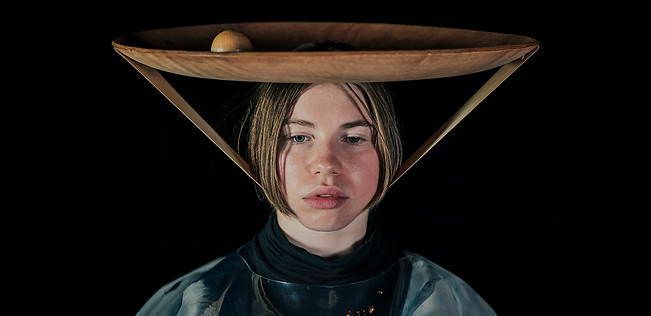Marginals - research statement

experimental aesthetics/ radical thinkings/
artistic inquiries/ alternative design methods/
boundary artefacts/ provocative body-objects
The word "marginal" defines my fashion and research practice well, as it has always been something other, alternative, radical, odd, something that is challenging, triggering, disrupting... My artistic research practice is about testing, experimenting, and questioning preconceptions. In my opinion, it is important to embrace the openness of the unknown or not-yet-known and rethink the content and methods of researching and teaching, considering aspects that relate to ‘unlearning’ beliefs, preconceptions, and values. For me, unlearning denotes an active critical investigation of normative structures and practices; it is, in a way, forgetting the taken-for-granted ‘truths’ of theory and practice. It is significant to evoke a new understanding and offer alternative aesthetics, encouraging the ontological investigation regarding alternative modes of thinking and designing the dress, expanding the concept of what it is and could be. As Maslow states, “[i]f all you have is a hammer, everything looks like a nail” (Maslow, 1966, p. 15). Thus, we need new tools and methods that help us rethink our current perspective on developing new approaches and design strategies that question existing knowledge while reconstructing something we assume to be known and building towards the unexpected.
Fashion is primarily a visual ontology consisting of definitions, theories, and methods based on visual language. A big part of my research revises fashion by approaching it from a different—sonic—perspective wherein sound is considered not a negative aspect but a potential source of new theory and methods. Sound in my research practice is presented not as a secondary quality of designed objects, but as the main idea-generator. An investigation into sonic expressions is seen as a disruptive fashion practice. It could be described as a process of ‘unlearning’—encouraging one to leave behind pre-existing knowledge of fashion expressions by focusing on something else when defining and designing. My research challenges existing theories with new terms, definitions, methods, and tools. It shows the importance of understanding fashion as a platform for new knowledge production and critical thinking, along with unlearning and rethinking preconceptions of what dress is and could be.
SOUND TO WEAR - performative introduction to the research
SOUND TO WEAR - the analog cabinet of sonic curiosities that consists of a toolkit of various sound-tools for listening and sounding practices
SONIC FASHION LIBRARY - the digital cabinet of sonic curiosities that consists of 400 sound records of various fashion items: fabrics, materials, clothing, accessory, and footwear:
WEARING SOUND: FOUNDATION OF SONIC DESIGN - doctoral thesis









